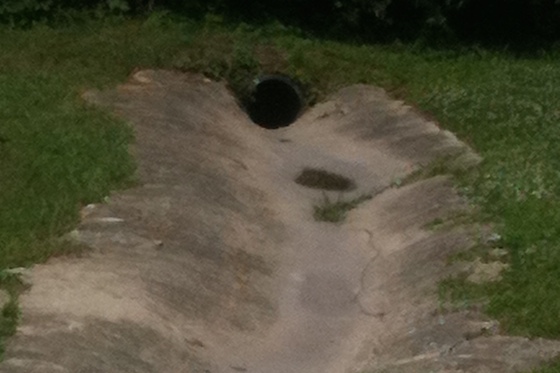We recently bought a park that had badly flooded a couple years ago. It was not on the edge of a river. It was not on the banks of a fast-moving creek. It was not on the beach. It was next to a golf course, next to an upscale subdivision. So how can you flood when you’re not in a flood plain?
The assumption of drainage
Every property has a drainage plan. My house has one, and so does yours. When it rains, the water naturally goes to the lowest area. That area has a pipe or canal that leads it off your property. All that rain eventually ends up in a major river and runs out to sea (even if that journey is 1,000+ miles long). But all you have to do is block that simple drainage plan, and the result is flooding. In the case of the property we bought, the drainage pipe that allowed the water to move on down the road was completely blocked with debris. So when it rained, it didn’t go anywhere. In small showers, it just evaporated. But when the big rains came, the property went under a foot of water.
How drainage can change over time
Every time they build a new Walmart or other large development, it changes how water drains. A few years ago, a section of Interstate 55 went completely underwater in Missouri. The cause was a metal dumpster that had been placed in the path of floodwaters behind a gas station. Nobody knew at the time that, given enough rain, the creek that used to run across a farm had now extended to the dumpster pad of the gas station. So the dumpster floated off and blocked the giant viaduct under the highway.
Lack of being proactive is the culprit
It’s a given that water has to drain. And not all drainage is so severe as to make a flood map. When buying a property, you need to do your own investigation for evidence of flooding problems. Talk to the city inspector and neighboring property owners, and see if there has been any history of flooding. And figure out the drainage plan for the property, and make sure that all drainage canals and pipes are kept meticulously clear of debris. What creates flooding is when water cannot keep flowing to the next property, so don’t let any blockages happen, and you can cure 98% of all problems. But the time to do so is not when it starts raining!
Conclusion
Flooding and RV parks do not go well together. So make sure that you are not going to have a flooding problem by understanding how and where the water goes, and making sure that it can get there without any problems. Examine past issues during due diligence, and make sure that you have a good understanding of where the water goes. You don’t have to be in a flood plain to flood. And, if you are proactive about it, you don’t have to flood at all.


